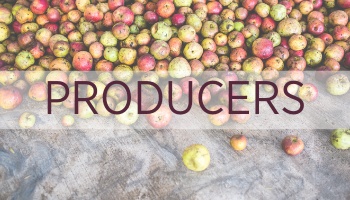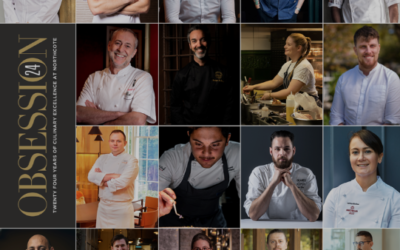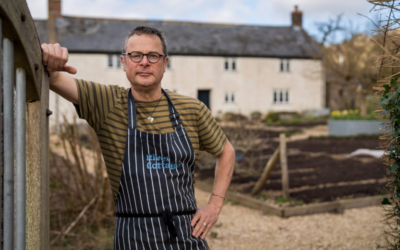This week is English Wine Week and there’s never been a better time to discover the refreshingly crisp notes of England’s flourishing wine industry.
For most connoisseurs, England isn’t the first country you think of when you picture the perfect crisp white or full-bodied red. For decades, France, Italy, Australia and New Zealand have dominated our purchasing choices – in fact, Britain is still one of the world’s largest wine importers.
All that may be set to change, though; inflation, higher production costs and growing supply chain issues could see the cost of wine imports soaring for UK buyers this year. In the US alone, for example, glass bottles are now 20% more expensive than they were pre-pandemic.
Yet the solution may be closer than we think; right on our doorstep, in some cases. For years, English wines have been quietly growing in popularity – so much so that there are now over 500 wineries across the British Isles, with most concentrated in the temperate climes of the South East.
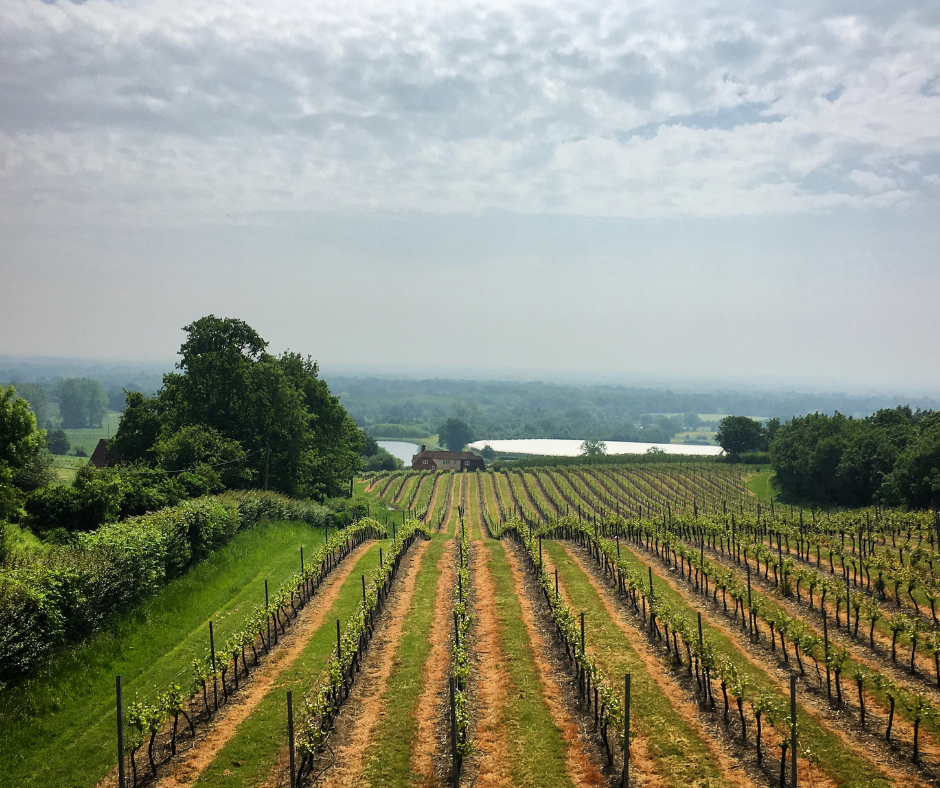
Buying local
“Consumers are starting to realise that the quality of wine coming out of their own country is of such high quality that shopping locally makes sense – not only from an environmental perspective but for the quality of the wonderful wine being produced,” says Allie Mount of award-winning Kent winery Gusbourne Estate.
“And the quality really is exceptional; at Gusbourne, we only produce wines from our own grapes grown in our own vineyards, so they retain that beautiful freshness that English wine is becoming so known for, whilst also possessing the depth and complexity that comes from our lengthy ageing process both on lees and on cork.”
In the last decade alone, 2.5 million vines have been planted across over 6,000 hectares in England and Wales, making it one of the UK’s fastest-growing agricultural sectors. Today, English wine is exported to 27 countries, with the USA being our biggest buyer. By 2040, the UK is expected to have produced around 40 million bottles.
“Emma leads our wonderfully talented wine-making team overseeing the job of turning our grapes into premium quality sparkling wine.” Comments Chris Unger, their Sales and Marketing Director. “Today, the winery is now one of Britain’s best known, and we have a large and expanding export reach that includes Australia, Japan, Norway, Germany, USA and numerous others.”
The perfect conditions
It’s easy to imagine that wine production wouldn’t be a natural fit for the variable British climate, but the Sussex, Kent and Hampshire coasts are considered some of the world’s best regions for viticulture. The combination of soil, climate and topography creates the perfect terroir for producing English sparkling wine in particular.
While still wines are flourishing – Chapel Down’s Still Rose, Bolney’s Pinot Gris and Denbies’ Pinot Noir are among the most popular – sparkling varieties have quickly become the true star of English wine production, accounting for around 70% of the UK’s total wine output.
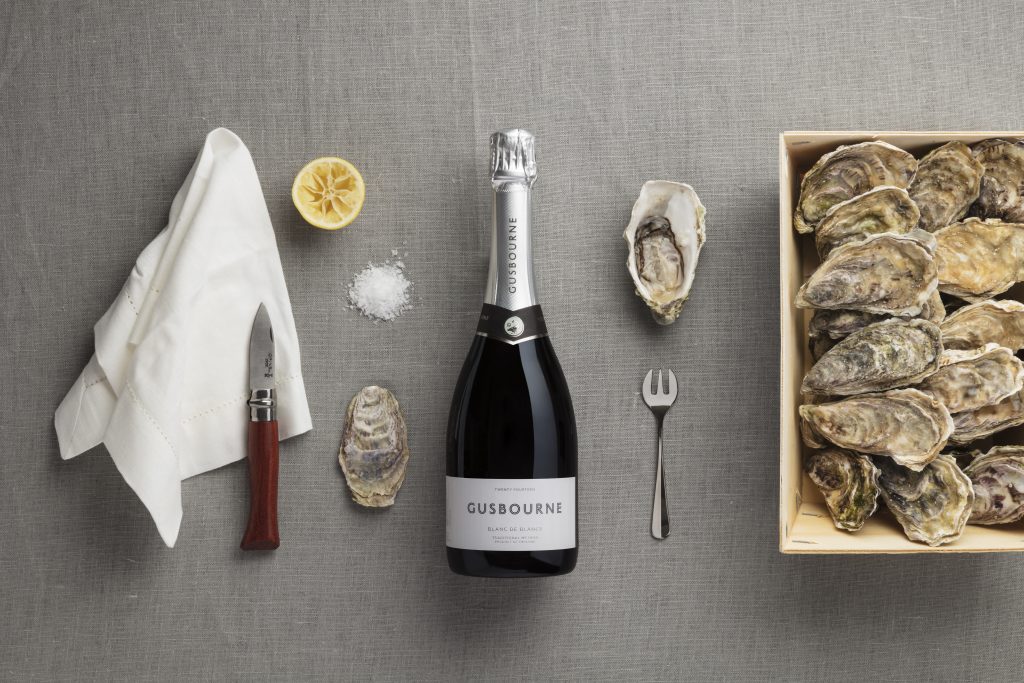
“Comparing English sparkling wine with champagne is a legitimate exercise,” says Allie. “Both originate from a topography of vineyards set on gently rolling hillsides, where the climate is more similar today than ever before. Both are largely produced from the same three grape varietals of Chardonnay, Pinot Noir and Pinot Meunier. Both employ the same production methods and are made under conditions that promote the highest quality.
“But the differences that are created in an English sparkling and a champagne winery today are the product of the house’s choice rather than country. Just as Krug differs from Pol Roger differs from Bollinger, so the taste profiles we create at Gusbourne differs from those of other English producers.”
A rich choice
While Gusbourne produce a wide range of still and sparkling wines from vintage pale rose to characterful Pinot Noirs, their signature Blanc de Blancs continues to be their best seller. Bright gold in colour, it features the classic Chardonnay aromas of citrus, green apple and mineral notes combined with a tart richness, making it a perfect accompaniment to seafood.
Across the border in Hampshire, Hattingley Valley Wines describe their production process as both an art and a science. Its first vines were planted in 2008 and it released its first bottles in 2013 to critical acclaim, with strong international demand. Along with Gusbourne, Chapel Down and Ridgeview in the chalky South Downs, Hattingley remains one of the country’s biggest producers.

But plenty of vineyards thrive further north, too. Astley Vineyard in Worcestershire, the Whitecastle Vineyard in Abergavenney, Ryedale Vineyards in North Yorkshire and the Three Choirs Vineyard in Gloucester, Hencote Wines in Shrewsbury, Shropshire are just some of the many vintners operating across the British Isles today. There’s even a healthy crop of vineyards springing up across the windswept North of Scotland.
English Wine Week, which this year runs from Saturday 18th June to Sunday 26th, is celebrating all these wonderful wineries and aim to inspire more people to explore the delights of the English wines produced here in the British Isles. Most of these vineyards run regular tours, and you could even combine it with an overnight break.
Happy discovering!
GBXclusive: SAVE 20% off English Wines.
Simply subscribe to save below, await for your welcome email, which includes a profile on each and your discount code, plus many other seasonal exclusive offers, and features. You can opt out at any time.





